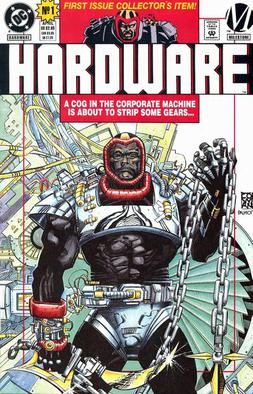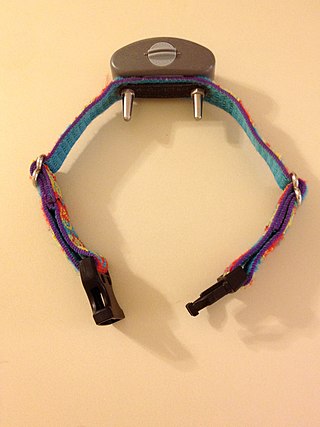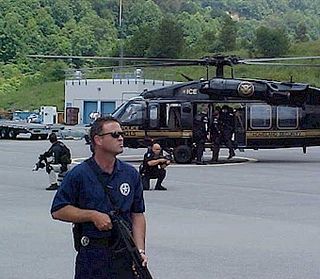
Non-lethal weapons, also called nonlethal weapons, less-lethal weapons, less-than-lethal weapons, non-deadly weapons, compliance weapons, or pain-inducing weapons are weapons intended to be less likely to kill a living target than conventional weapons such as knives and firearms with live ammunition. It is often understood that unintended or incidental casualties are risked wherever force is applied, but non-lethal weapons try to minimise the risk of casualties as much as possible. Non-lethal weapons are used in policing and combat situations to limit the escalation of conflict where employment of lethal force is prohibited or undesirable, where rules of engagement require minimum casualties, or where policy restricts the use of conventional force. These weapons occasionally cause serious injuries or death; the term "less-lethal" has been preferred by some organizations as it describes the risks of death more accurately than the term "non-lethal", which some have argued is a misnomer.

An electrical injury, or electrical shock is damage sustained to the skin or internal organs on direct contact with an electric current.

A taser is a conducted energy device (CED) primarily used to incapacitate people, allowing them to be approached and handled in an unresisting and thus safe manner. Sold by Axon, formerly TASER International, the device fires two small barbed darts intended to puncture the skin and remain attached to the target, at 55 m/s. Their range extends from 4.5 m (15 ft) for non-Law Enforcement Tasers to 10.5 m (34 ft) for Law Enforcement Tasers. The darts are connected to the main unit by thin insulated copper wire and deliver a modulated electric current designed to disrupt voluntary control of muscles, causing "neuromuscular incapacitation." The effects of a taser may only be localized pain or strong involuntary long muscle contractions, based on the mode of use and connectivity of the darts.

An electroshock weapon is an incapacitating weapon. It delivers an electric shock aimed at temporarily disrupting muscle functions and/or inflicting pain without usually causing significant injury.

Erotic electrostimulation is a sexual practice involving the application of electrical stimulation to the nerves of the body, with particular emphasis on the genitals, using a power source for purposes of sexual stimulation. Electrostimulation has been associated with BDSM activities, and erotic electrostimulation is an evolution of that practice.

An intercom, also called an intercommunication device, intercommunicator, or interphone, is a stand-alone voice communications system for use within a building, small collection of buildings or portably within a small coverage area, which functions independently of the public telephone network. Intercoms are generally mounted permanently in buildings and vehicles, but can also be detachable and portable. Intercoms can incorporate connections to public address loudspeaker systems, walkie talkies, telephones, and other intercom systems. Some intercom systems incorporate control of devices such as signal lights and door latches.

Hardware is a fictional superhero published by DC Comics. An original character from DC's Milestone Comics imprint, he first appeared in Hardware #1, and was created by Dwayne McDuffie and Denys Cowan.

A body belt is any waist belt which has D-rings or other attachment points. The belts can be used as medical restraints in institutions for bed and wheelchair restraints, and for safety in activities such as abseiling or construction work. When they are used in sexual bondage plays they are commonly referred to as bondage belts, and also worn in fetish clothing. The belts are usually fastened with buckles and some by a locking mechanism, which enables quick release.

An electric fence is a barrier that uses electric shocks to deter people and/or other animals from crossing a boundary. The voltage of the shock may have effects ranging from discomfort to death. Most electric fences are used for agricultural fencing and other forms of non-human animal control, although they are also used to protect high-security areas such as military installations or prisons, where potentially-lethal voltages may be used. Virtual electric fences for livestock using GPS technology have also been developed.

Remote control animals are animals that are controlled remotely by humans. Some applications require electrodes to be implanted in the animal's nervous system connected to a receiver which is usually carried on the animal's back. The animals are controlled by the use of radio signals. The electrodes do not move the animal directly, as if controlling a robot; rather, they signal a direction or action desired by the human operator and then stimulate the animal's reward centres if the animal complies. These are sometimes called bio-robots or robo-animals. They can be considered to be cyborgs as they combine electronic devices with an organic life form and hence are sometimes also called cyborg-animals or cyborg-insects.

A cattle prod, also called a stock prod or a hot stick, is a handheld device commonly used to make cattle or other livestock move by striking or poking them. An electric cattle prod is a stick with electrodes on the end which is used to make cattle move via a relatively high-voltage, low-current electric shock. The electric cattle prod is said to have been invented by Texas cattle baron Robert J. Kleberg, Jr. of the King Ranch around 1930, although versions were sold as early as 1917.

The picana or picana eléctrica is a device used to give an electric shock during electrical torture.
Axon Enterprise, Inc. is an American company based in Scottsdale, Arizona that develops technology and weapons products for military, law enforcement, and civilians.

A shock collar or remote training collar, also known as an e-collar, Ecollar, or electronic collar) is a type of training collar that utilizes electrical shocks to induce pain to the neck of a dog or other parts of its body, depending on the desired outcome. These collars incorporate a radio-controlled electronic device and are worn around the dog's neck. Many European countries view shock collars as animal cruelty and have banned their use. The mechanism behind shock collars involve inflicting varying levels and duration of pain, which generates fear and serves as a deterrent for undesirable behaviors. Some models of shock collar models offer additional features such as a tone or vibrational setting that can be used as an alternative or in combination with the shock. Certain advanced collars include Internet mapping capabilities and GPS functionality to track the dog's location or notify the owner about its whereabouts.

Prisoner transport is the transportation of prisoners by law enforcement agencies or contractors.

Taser safety issues relate to the lethality of the Taser. The TASER device is a less-lethal, not non-lethal, weapon, since the possibility of serious injury or death exists whenever the weapon is deployed. It is a brand of conducted electroshock weapon sold by Axon, formerly TASER International. Axon has identified increased risk in repeated, extended, or continuous exposure to the weapon; the Police Executive Research Forum says that total exposure should not exceed 15 seconds.
Since the release of the Nintendo Wii, many aesthetic, ergonomic and functional accessories have been developed by third parties for the console’s controller, the Wii Remote.

The term torture trade refers to the manufacture, marketing, and export of tools commonly used for torture, like restraints and high-voltage electro-shock weapons. In 2001, Amnesty International released a report on "Stopping the Torture Trade".
Dive Xtras is a manufacturer of diver propulsion vehicles (DPVs) or dive scooters in Mukilteo, Washington, United States.













